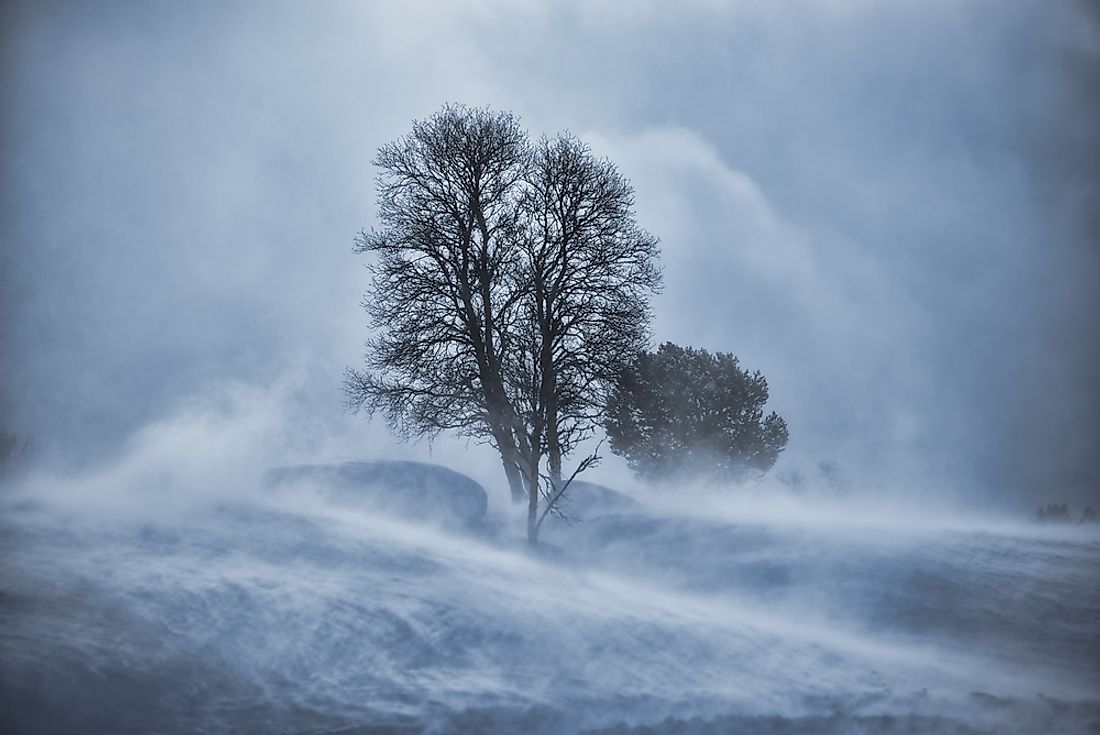What Is a Ground Blizzard?

A ground blizzard is a weather condition that is characterized by the lifting up of the loose snow or ice on the ground. The lifted snow or ice is then blown away by a strong wind. The ground blizzard can occur with or without any form of precipitation and also when the sky is clear. It occurs when the Arctic cold front finds its way through the region, leading to an increase in winds and drop in temperature. If there are some loose snow on the ground, the strong wind quickly picks them up, creating a whiteout condition. The minimum speed required for the wind to transport snow is 12 mph. if the wind is blowing faster, the snow is transported further, faster, and higher, leading to the white-out condition.
Characteristics of a Ground Blizzard
The term “ground blizzard” is associated with the lifting up, blowing, and drifting of snow or ice. However, there are some of the conditions that must be met for a weather condition to qualify as a ground blizzard. The criteria and conditions depend on the weather governing agency of a country. In the United States, the National Weather Service defines a blizzard as having a sustained wind of at least 35 mph with visibility maintained below 0.25 miles in a considerable blowing snow. The conditions must also prevail for at least three hours. In Canada, the Environment Canada maintains that the visibility must be less than 400 meters in a blowing snow and the speed of wind sustained at 40 mph or more for four hours or more and for at least six hours for Nunavut and Northwest Territories.
Types of Ground Blizzards
There are three types of ground blizzards; horizontal advection, vertical advection, and thermal-mechanical mixing conditions. In horizontal advection, the wind blowing across the surface of the earth has very little or no large-scale upward motion. For vertical advection, the blowing wind has a large-scale upward movement and lifts the loose snow into the atmosphere, leading to the formation of drifting waves of snow up to about 1,640 feet. Thermal-mechanical mixing type leads to the formation of massive rolls in the atmosphere. The massive rolls create waves of snow known as snow billows which can be observed from the space.
Difference Between Blizzards and Ground Blizzards
Blizzard and ground blizzard are sometimes confused or considered as the same. However, there is a major difference between the two. A ground blizzard is the lifting up and blowing away of loose snow or ice by a strong wind whereas a blizzard is a snowstorm characterized by falling of heavy snow and strong wing that last for at least three hours. Ground blizzard can occur in the absence of precipitation while for the blizzard to occur there must be precipitation in the form of falling snow.
Example of a Ground Blizzard - Blizzard of 1977
The Blizzard of '77 was experienced in western New York and southern Ontario. It took place between January 28 and February 1, 1977. The ground blizzard was characterized by strong winds ranging from 46-69 mph and a snowfall of as high as 100 inches in some areas. The strong winds blew the snow into a drift of 30-40 feet, resulting in at least 28 deaths in western and northern New York state.











